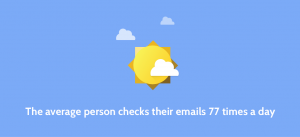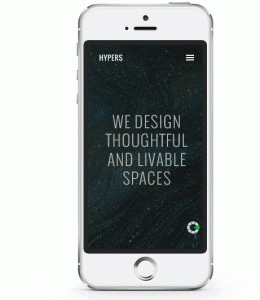— August 18, 2017

bluebudgie / Pixabay
Ask any copywriter to name their biggest challenge today, and ten to one will tell you it’s writing for the ever-shrinking attention span.
Whether we really do have shorter attention spans than goldfish, as the news tells us, or we’re just lazier, there’s no denying our tolerance for lengthy, complicated text has nosedived in recent years.
For those in the business of writing cold emails every day, this is a constant source of frustration. It’s hard enough to get a potential buyer past the subject line of a message, so it’s downright disheartening to know that when you do, there’s no guarantee someone will read to the end. How many of us simply glance at a long email and quickly move on, or sometimes need a dictionary to understand a pitch? Have you ever received an email that felt more appropriate for a creative-writing class than a business relationship?
These mistakes aren’t exclusive to sales, but they’ll sabotage a cold email in mere seconds. To keep your potential customers reading and your chances of closing a deal higher, follow these five easy copywriting strategies:
1. Assume your reader is lazy.
It sounds harsh, but it’s true more often than not. Yours is one of hundreds of emails clogging up the recipient’s inbox. The last thing they want at 4 p.m. on Thursday is to spend even five extra minutes reading about how much your company can help them. Assume they won’t, then check every word and sentence with that in mind. This simple step can double the chances of holding their attention to the end of the email.
2. Keep sentences short.
Long sentences make the reader work too hard. In turn, they’ll become frustrated and give up halfway through. And the longer the sentence, the faster someone will read it and miss important points along the way. Stick to one idea per sentence, especially in your opening line and call to action. Read your emails out loud before sending. You might feel a little silly at first, but the sound of your own voice is the most reliable way to tell if you’re rambling.
3. Use simple words.
Simple words engage the reader. Even a CEO with an MBA or PhD doesn’t have time—or desire—to read about “adverse circumstances due to legacy technology” when you could just suggest they move to the cloud. Respect your potential buyer’s time by keeping it simple. An easy trick is to count the the number of syllables in a word—the more there are, the more you’ll annoy your reader.
4. Tear down walls of text.
Like long sentences, huge blocks of text tell the recipient they’ll have to work hard to understand your message. Keep your emails three to five sentences, tops, and break those sentences up into paragraphs. An easy format is: one opening line; two to three lines for the body; and a single sentence for the call to action. If it’s absolutely necessary to include more information, try arranging it in bullet-point lists or, better yet, suggest a 10-minute phone call.
5. Write to a mobile audience.
Picture someone tearing through an airport terminal, suitcase in one hand, phone in the other, announcements blaring over the loudspeaker. That’s a pretty accurate portrait of how we work nowadays, in the airport or otherwise. Keep this image of the mobile worker in your mind when composing your emails. Would they stop in the middle of the terminal to read your entire email? If the answer isn’t an immediate “yes,” revise accordingly before you hit “send.”
Digital & Social Articles on Business 2 Community
(57)





